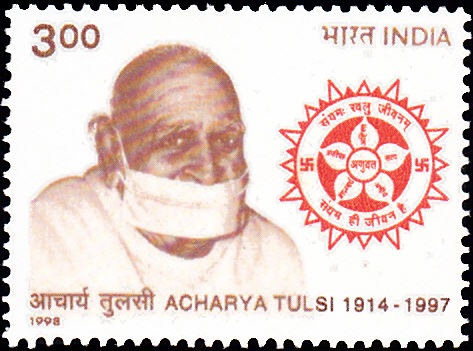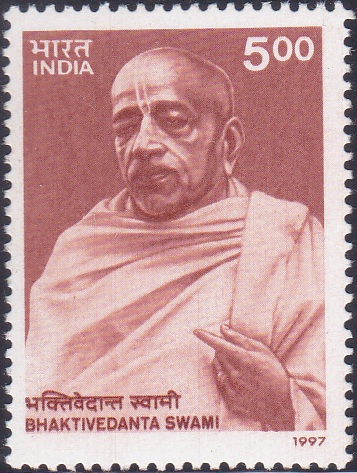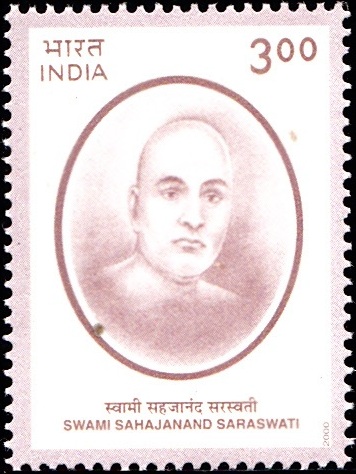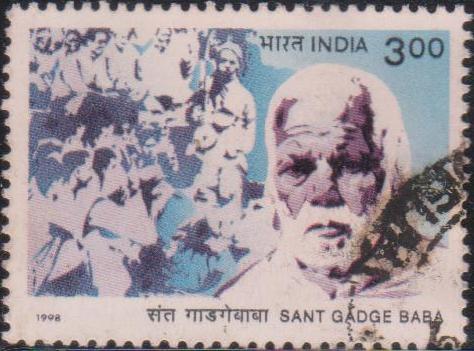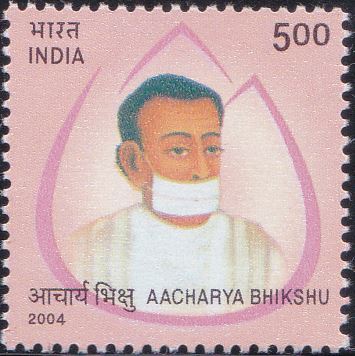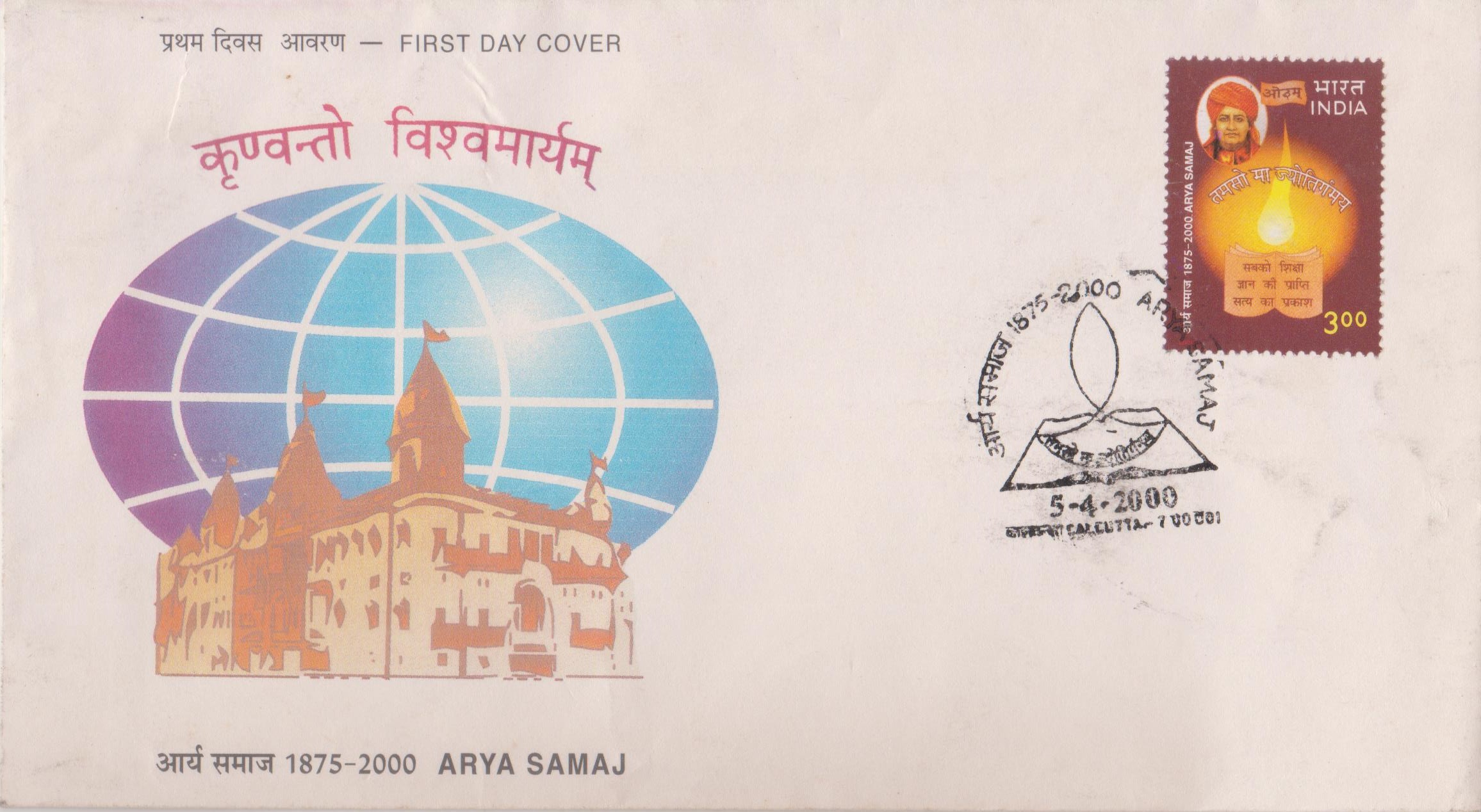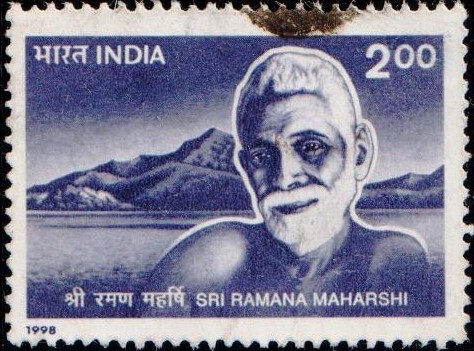
Sri Ramana Maharshi 1998
A commemorative postage stamp on Bhagavan Sri Ramana Maharshi, an Indian sage and jivanmukta from Tamil Nadu :

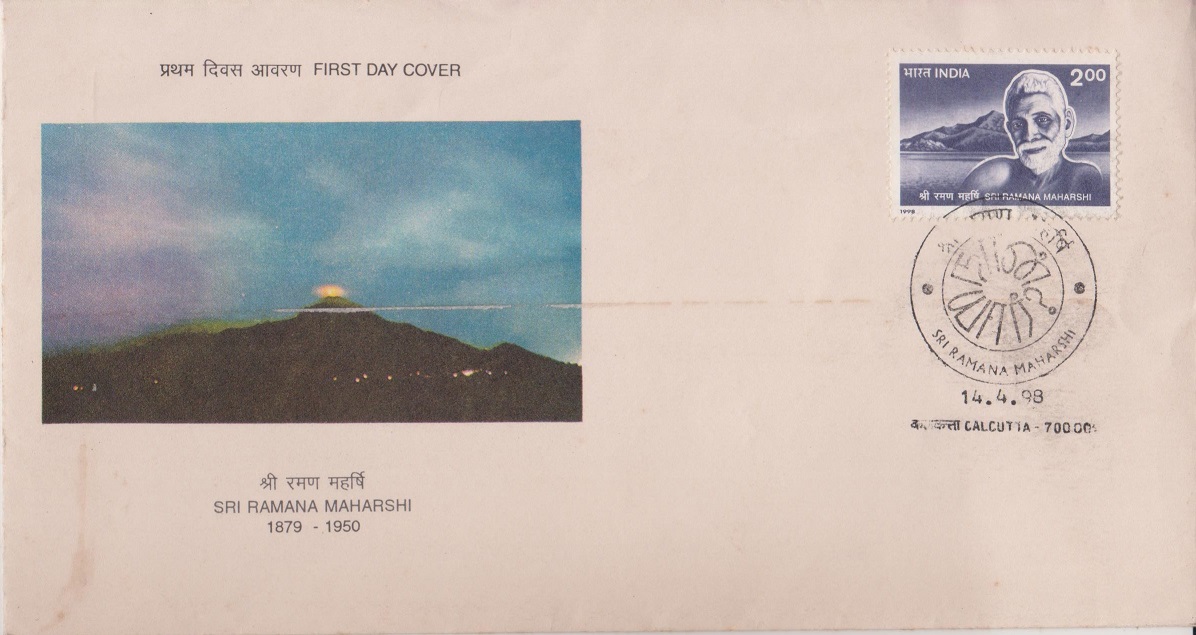
Issued by India
Issued on Apr 14, 1998
Issued for : The Department of Post is privileged to issue a commemorative stamp on Sri Ramana Maharshi.
Design : The stamp depicts the Maharshi against Arunachala, where he remained till he shed his mortal soil on 14th April 1950. The first day cover also depicts Arunachala, termed by the Maharshi, the spiritual centre of the world.
Credits :
Stamp, FDC & Cancellation : Smt. Bharati Mirchandani
Type : Stamp, Postal Used
Colour : Single Colour
Denomination : 200 Paise
Overall size : 3.91 x 2.90 Cms.
Printing size : 3.55 x 2.54 Cms.
Perforation : 13 x 13
Paper : Imported un w/m Adhesive Gravure Coated Stamp Paper in reels 47 cms. width
Stamps Printed : 0.4 Million
Number per issue sheet : 35
Printing Process : Photogravure
Printer : India Security Press, Nashik
Name : Venkataraman Iyer
Born on Dec 30, 1879 at Tiruchuzhi, Madras Presidency, British India [now Tiruchuli, Tamil Nadu, India]
Died on Apr 14, 1950 at Sri Ramana Ashram, Tiruvannamalai, Tamil Nadu, India
About :
- Sri Ramana Maharshi was born on 30th December, 1879 at Tiruchuzhi near Madurai in Tamil Nadu. When he was 17 years old and was studying in High school, was suddenly seized by the fear of death. By introspection he discovered that it is only the material body that dies. The spirit transcending it cannot be touched by death. He realised “I am therefore the deathless spirit”. After such realization he lost all interest in worldly life. He left home and reached Arunachala (Tiruvannamalai) on 1st September, 1896 and remained there till he shed his mortal frame on 14th April 1950.
- He was totally silent for several years at Arunachala and when he started speaking, devotees from all over the world flocked to him. He advocated the method of self-enquiry as the direct means for eradicating the ego: to enquire within oneself “who am I?” meaning what is the truth of me and “where am I?” meaning what is the source from which the sense of self emanates. Such quest enables the seeker to dive into his Heart – the source of consciousness and this path was described as the Maha Yoga, a simple direct path which can be practised by votaries of all faiths and religions. Sri Ramana Maharshi, taught realization of God, the goal mentioned in several religious texts is not different from self realization and that is the goal which everyone can attain on his own.
- All creation was the same in the Maharshi‘s eyes. Two incidents in his life would illustrate this. In May, 1922, when his mother was on her death-bed, he sat beside her, his right hand on her heart and his left hand on her head, quietening the mind so that death could be ‘Mahasamadhi’, absorption in the Self. In the other incident in 1948 he performed the same office for the Ashram cow, Lakshmi.
- From 1896 to 1950, for a span of over 50 years, the Maharshi spread his message for inward peace and realization. The only other parallel to this is Gautama Buddha who lived for about 50 years after Realization. The uniqueness of the Maharshi was also that he was accessible to all at all times and all who turned to him considered them-selves blessed.
- His message is set out tersely, in the Tamil poems ‘Upadesa Sara‘ and ‘Ulladu Narpadu‘ and in the works of the saint poet Muruganar.
- The shrine of Grace of the Maharshi is situated in Sri Ramanasramam. Again and again, he impressed on all that real Maharshi was not the body which people saw but the inner being, the real Self and that his presence and grace can be felt by all those who turn to him in an earnest search for truth.


